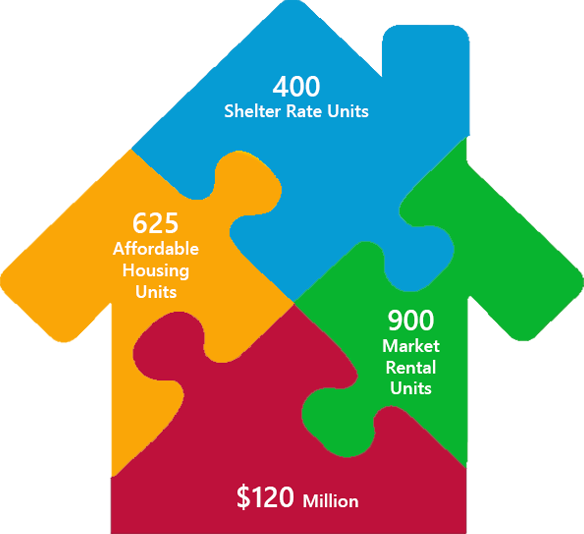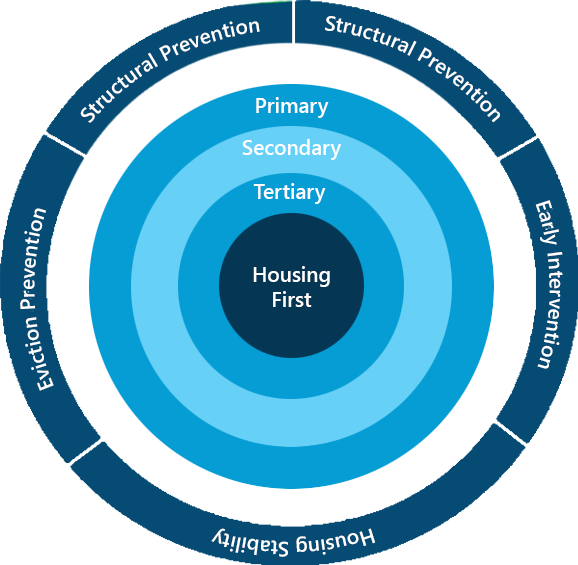The AEHCR Ceased Operations September 30, 2025
The Regional Housing First Program (RHFP)
The Regional Housing First Program (RHFP) meets a broad range of housing needs while moving at-risk individuals from streets or shelters into long-term, tenant-based, supported housing to enable recovery and integration into society.
The AEHCR and its partners have adopted a “Housing First” philosophy to addressing homelessness, underpinned by complementary prevention strategies. These philosophies and strategies support people who move from homelessness to being housed and retaining their housing while helping keep people at risk of homelessness from becoming homeless.
According to Stephen Gaetz and Erin Dej, leading Canadian homelessness researchers,
The Housing First model provides housing and supports for people experiencing chronic homelessness with no housing readiness requirements. New research, innovation, and best practices have propelled our thinking to make the goal of ending homeless realistic; however we are still missing an important piece – preventing homelessness in the first place.
Breakdown of the Regional Housing First Program
The Regional Housing First Program in the CRD
The Regional Housing First Program in the CRD
The Capital Regional District (CRD) aims to eliminate chronic homelessness in southern Vancouver Island and the southern Gulf Islands through mixed-market housing, partnerships, and streamlined support services. The Regional Housing First Program (RHFP) meets a broad range of housing needs while moving at-risk individuals from streets or shelters into long-term, tenant-based, supported housing to enable recovery and integration into society.
The core of the RHFP is $90 million dollars invested equally by the governments of Canada, British Columbia, and the Capital Regional District. That $90 million will underwrite the costs of 400 units that will rent at a provincial income assistance rate. Funding partnerships will extend the program to the approximately $400 million, creating a total of more than 2000 new rental housing units in the region. In addition to the shelter rate units, the program will also create affordable and market-rate rentals within the same buildings.
Health, social and other supports for those people who need them will be delivered on an individual rather than a building basis, and residents will be able to move between rental options as their life circumstances allow.
June 2020 Update: The program partners of the Regional Housing First Program (RHFP) have reached agreement to extend the program by contributing additional matching grants of $10 million each, for a total of $120 million, to ensure the program reaches its target number of homes for people experiencing chronic homelessness who are ready to live independently with supports.
Regional Housing First Program Timeline
The timeline for approval, construction, and occupancy of the Regional Housing First Program focuses on the 400 units needed at the Provincial Shelter Rate that are core to ending chronic homelessness in the region.
As these units will be built among the affordable and market rental units to ensure healthy, diverse communities, the overall program timeline correlates to that of the shelter rate units.
Resources:
Levels of Prevention
Homelessness prevention refers to policies, practices and interventions that reduce the likelihood that someone will experience homelessness. It also means providing those who have been homeless with the necessary resources and supports to stabilize their housing, enhance integration and social inclusion, and ultimately reduce the risk of the recurrence of homelessness.
Primary
Initiatives that apply to everyone to reduce the risk of homelessness and build protective factors within the population at large.
Secondary
Strategies aimed at those at imminent risk of homelessness or who have recently become homeless, with the intention of avoiding or moving out of homelessness quickly.
Tertiary
Initiatives that support individuals and families who have experienced homelessness to ensure that it doesn’t happen again. Housing First is a type of tertiary prevention focused on chronically homeless individuals.
Types of Prevention
Structural Prevention
Legislation, policy, and investment that builds assets, and increases social inclusion and equality.
Systems Prevention
Addressing institutional and systems failures that contribute to the risk of homelessness.
Early Intervention
Policies and practices to support individuals and families at imminent risk of homelessness or who have recently become homelessness.
Evictions Prevention
Programs and strategies designed to keep people at risk of eviction in their home and avoid homelessness.
Housing Stability
Initiatives and support for people who have experienced homelessness that allows them to exit homelessness quickly and never experience it again.
Click here to add your own text

